The world of video is undergoing a seismic shift. What once required expensive cameras, trained crews, and weeks of painstaking work can now be sparked into existence with a single line of text. Welcome to the era of the Generative Screen, where artificial intelligence is not just an editing assistant but a creative director, a visual effects artist, and a tireless production house all rolled into one. The AI video creation market is exploding, projected to soar past $10.5 billion by 2033, fundamentally reshaping how businesses market, creators tell stories, and corporations communicate.
This isn’t just about automating old tasks; it’s about unlocking entirely new possibilities. From hyper-realistic cinematic clips generated from a simple prompt to scalable corporate training videos featuring lifelike AI avatars, the technology is advancing at a breathtaking pace. But with this immense opportunity comes complexity. The market is fragmenting, technical hurdles remain, and a legal and ethical minefield looms.
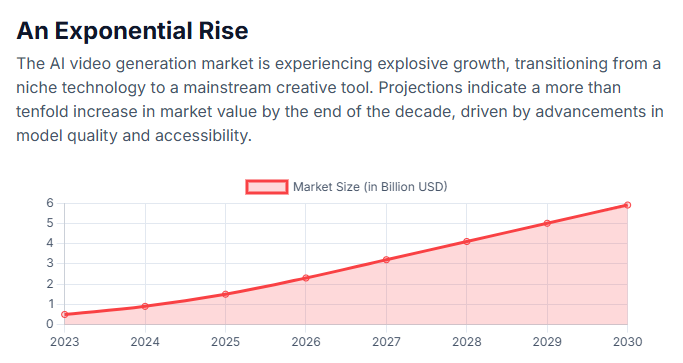
This comprehensive guide will break down the AI video revolution. We’ll explore the core technologies powering this change, compare the key players in a crowded market, and provide a practical roadmap for harnessing this power for your own projects. Whether you’re a marketer, a filmmaker, or a business leader, understanding this new landscape is no longer optional—it’s essential.
The Multi-Billion Dollar Boom: Why AI Video is Taking Over
The explosive growth of the AI video market isn’t a fluke; it’s fueled by a potent combination of economic and technological drivers that are democratizing content creation on an unprecedented scale. The value proposition is simple yet profound: make video production faster, cheaper, and more scalable than ever before.
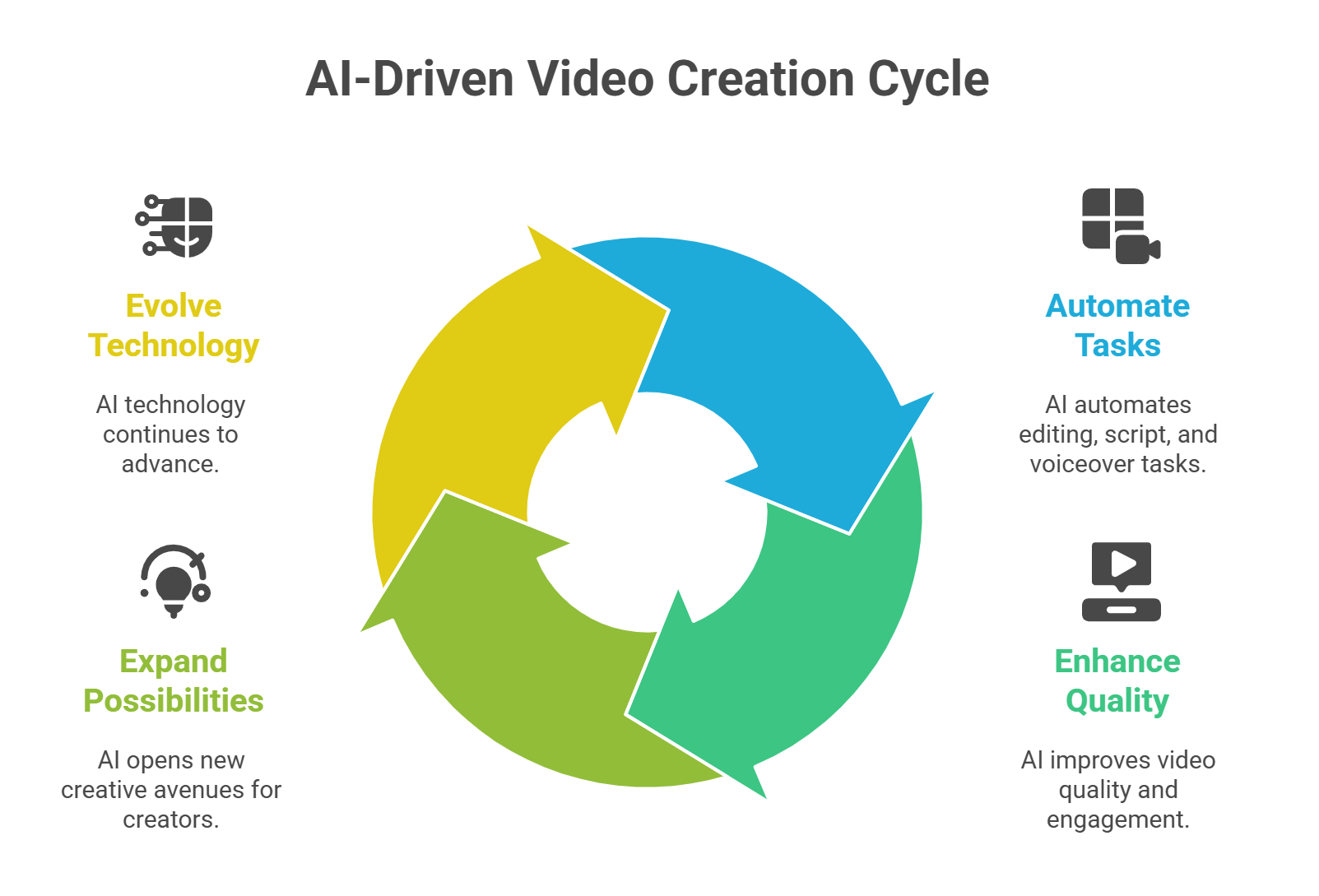
Key Drivers of the AI Video Market:
- Radical Cost Reduction: The traditional barriers to video production—expensive cameras, studio rentals, actors, and specialized editing software—are being systematically dismantled. AI platforms allow a single creator to produce high-quality video content from their laptop, making it accessible to small businesses, startups, and individual creators who were previously priced out.
- Unprecedented Speed and Scalability: The production timeline is being compressed from weeks or days into mere minutes. Brands can now generate dozens of variations of a single ad to test performance, localize a marketing video into multiple languages with a click, or automatically reformat content for different social media platforms. This ability to produce engaging content at scale is a game-changer for digital marketing teams.
- Democratization of Creativity: AI is shifting the core skills required for video production. Value is moving away from technical execution (like cinematography and editing) and upstream toward creative strategy, ideation, and a new critical skill: prompt engineering. This empowers small, agile teams to create visually competitive content, challenging the historical dominance of large studios.
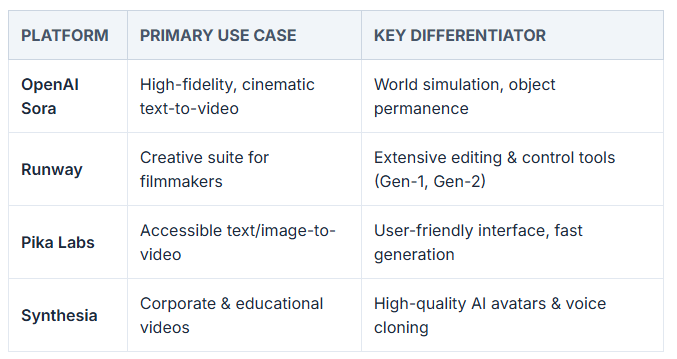
However, this new landscape has its own challenges. A “democratization paradox” is emerging. While basic AI video tools are cheap or free, access to state-of-the-art generative models like Google’s Veo remains a significant operational expense. These premium platforms often use credit-based systems, creating a new digital divide based on budget. The strategic challenge isn’t just whether to adopt AI video, but how to budget for the specific level of quality and control your goals demand.
Decoding the AI Video Toolbox: From Creation to Polishing
The term “AI video” covers a wide range of technologies. A complete, professional workflow often requires a strategic combination of tools from different categories. The ecosystem can be broken down into a four-tiered stack, each serving a distinct function.
1. Creation: Generating Novel Content from Scratch
This is the heart of the revolution, where AI synthesizes entirely new video content.
- Text-to-Video (T2V): The most talked-about category. You write a text prompt, and the AI generates a video clip. Leading models like OpenAI’s Sora, Google’s Veo, and Kuaishou’s Kling are pushing the boundaries of realism and cinematic quality.
- Image-to-Video (I2V): This technique animates a static image. It’s often more efficient and controllable than T2V. A popular workflow is to perfect a single “hero frame” in an AI image generator like Midjourney and then use an I2V model like Runway to bring it to life with motion.
- Video-to-Video (V2V): This involves transforming an existing video by applying a new artistic style, changing the background, or adding special effects.
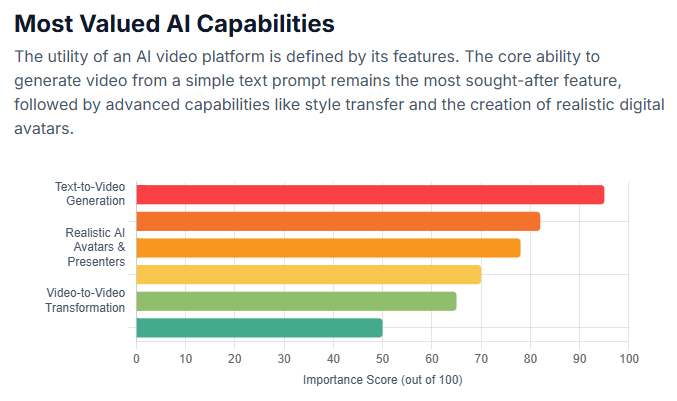
2. Presentation: AI Avatars and Synthetic Media
This layer is dominated by platforms that generate videos featuring photorealistic digital presenters, perfect for corporate and educational content.
- AI Avatars: Platforms like Synthesia and HeyGen offer vast libraries of stock avatars. You simply provide a script, and the avatar will narrate it with lifelike expression. It’s a powerful tool for creating training modules, sales videos, and internal communications without the hassle of filming real people.
- Voice Cloning & Localization: A key feature of these platforms is multilingual support. You can convert a script into over 100 languages and dialects, and even clone a specific person’s voice to create highly personalized, branded communications at scale.
3. Repackaging: AI-Assisted Editing and Repurposing
These tools use AI to efficiently transform existing content into engaging videos.
- Content Conversion: Platforms like Fliki and InVideo can take a blog post, a PowerPoint presentation, or even a product URL and automatically create a video. The AI analyzes the text, finds relevant stock footage and images, and adds background music to construct a narrative.
- Automated Editing: This category also includes tools that automate tedious tasks, such as generating subtitles, removing filler words (“ums” and “ahs”), and intelligently timing music.
4. Polishing: Enhancement and Upscaling
The final layer consists of specialized software designed to improve the technical quality of your video, whether it was shot on a camera or generated by another AI.
- Upscaling and Enhancement: Tools like Topaz Video AI use advanced algorithms to increase video resolution (e.g., from HD to 4K), remove visual noise, stabilize shaky footage, and create ultra-smooth slow-motion effects through frame interpolation.
The Players of the Game: A 2025 Competitive Showdown
The AI video market is a dynamic battlefield, with tech giants, nimble startups, and established software companies all vying for dominance. The landscape is splitting between platforms focused on cinematic creativity and those engineered for corporate efficiency.
The Cinematic Titans: The Race for Realism
These platforms are for artists and filmmakers pushing creative boundaries.
- Google Veo: A premium model known for its incredible grasp of physics and high-resolution output.
- OpenAI Sora: Gained fame for its ability to generate longer clips with strong narrative continuity.
- Kling: A powerful contender from Kuaishou, praised for its cinematic quality and competitive pricing.
- Runway: An early pioneer with a deep feature set but mixed user reviews regarding prompt adherence and cost.
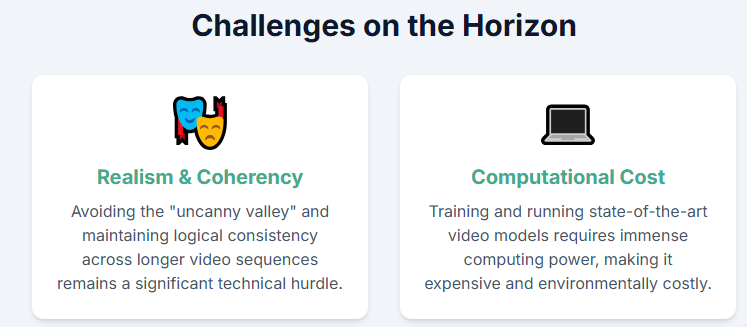
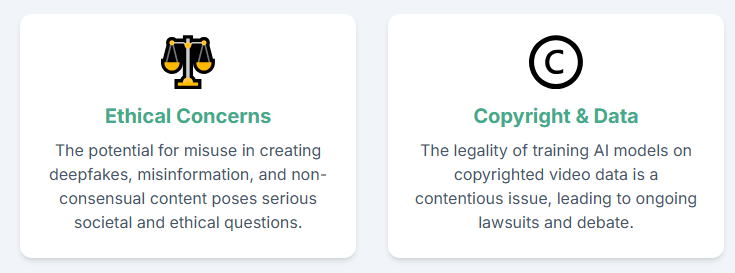
The Corporate Workhorses: Scalable Communication Engines
These platforms prioritize reliability, consistency, and ease of use for enterprise applications.
- Synthesia: The clear market leader, trusted by over 50,000 companies for its realistic avatars, robust security, and deep language support. It’s the go-to for corporate L&D and communications.
- HeyGen: A major competitor praised for its user-friendly interface, making it accessible for marketing and training content.
- Elai.io: Focuses on L&D with unique features like “Avatar Dialogs” for creating scenario-based training.
AI in Professional Editors: The Integration Wave
Instead of competing directly, industry-standard Non-Linear Editors (NLEs) are integrating AI as a powerful layer of augmentation. This suggests the future is a hybrid model, where generated assets are refined in professional software.
- Adobe Premiere Pro: Features Adobe Sensei AI for text-based editing, auto reframing, and advanced audio enhancement.
- DaVinci Resolve: Boasts an extensive set of AI tools, including the phenomenal Magic Mask for automated rotoscoping and powerful voice isolation.
- Final Cut Pro: Now includes AI-powered tools like Magnetic Mask to isolate subjects without a green screen and automatic transcription.
AI Video Platform Comparison (2025)
Platform |
Primary Use Case |
Generation Type(s) |
Max Resolution |
Starting Price (Monthly) |
Target Audience |
Google Veo 3 |
Cinematic Generation |
Text-to-Video, Image-to-Video |
720p+ |
$19.99 |
Creative Professionals, Filmmakers |
OpenAI Sora |
Narrative Generation |
Text-to-Video |
1080p |
$20 (as part of ChatGPT Plus) |
Creators, Storytellers |
Kling |
Cinematic Generation |
Text-to-Video, Image-to-Video |
1080p |
$6.99 |
Filmmakers, Creative Agencies |
Runway |
Creative/Stylized Video |
T2V, I2V, V2V |
1080p |
$12 |
Artists, VFX Professionals |
Synthesia |
Corporate Avatars |
Script-to-Avatar |
1080p |
$29 |
Enterprises, L&D, Marketing |
HeyGen |
Corporate Avatars |
Script-to-Avatar, T2V |
1080p |
$24 |
Marketers, Trainers |
InVideo |
Social Media Content |
Text-to-Video |
1080p |
$35 |
Marketers, Small Businesses |
Fliki |
Content Repurposing |
Text-to-Video, Blog-to-Video |
1080p |
$21 |
Content Creators, Educators |
Descript |
Dialogue-based Editing |
Transcription-based Editing |
4K |
$24 |
Podcasters, YouTubers |
Topaz Video AI |
Video Enhancement |
Upscaling, Denoising |
Up to 16K |
One-time purchase |
Videographers, Editors |
Note: Pricing and features are subject to change. Data compiled from provided sources.
Navigating the Headwinds: Copyright, Deepfakes, and the Path Forward
The path forward is not without its obstacles. The industry is grappling with significant technical limitations and navigating a complex ethical and legal minefield.
Key Challenges:
- Quality and Control: AI-generated videos can still suffer from visual artifacts, inconsistent objects (a shirt changing color mid-scene), and the “uncanny valley” effect. Gaining granular creative control to make subtle adjustments remains a major hurdle.
- The Copyright Conundrum: Two massive legal questions are unresolved. First, can purely AI-generated work be copyrighted? U.S. law currently requires “human authorship,” meaning your AI-created masterpiece might be in the public domain. Second, is it legal for AI companies to train their models on copyrighted data without permission? This “fair use” debate is being fought in courts now.
- The Deepfake Dilemma: The ability to create realistic fake videos of real people (deepfakes) poses a severe threat of misinformation, harassment, and fraud. This erodes public trust and necessitates robust detection technologies and regulatory frameworks.
Your Strategy for the Generative Future
The AI video revolution is here. Success will not come from ignoring it, but from engaging with it strategically.
- For Creators & Creative Professionals: Embrace AI as a creative partner. Focus on developing the skills that AI cannot replicate: storytelling, conceptual thinking, and prompt engineering. Master a hybrid workflow, using generative tools to create assets and professional editors to refine and assemble them. Your value is now in your ability to direct the AI.
- For Businesses & Marketers: Move from experimentation to strategic integration. Start by automating repetitive video tasks to gain immediate efficiency. For a long-term advantage, explore how AI-driven personalization can create superior customer experiences and consider training custom models on your own brand assets for ultimate consistency.
- Establish Ethical Guidelines: Be transparent. Disclose when content is AI-generated to maintain audience trust. Establish clear internal policies on the use of AI avatars and data privacy to navigate the ethical landscape responsibly.
Creating a video may soon be as simple as writing an email. This profound shift is unlocking a torrent of creativity and communication. The future belongs to those who learn to wield this powerful new tool with vision, skill, and a deep sense of responsibility.


